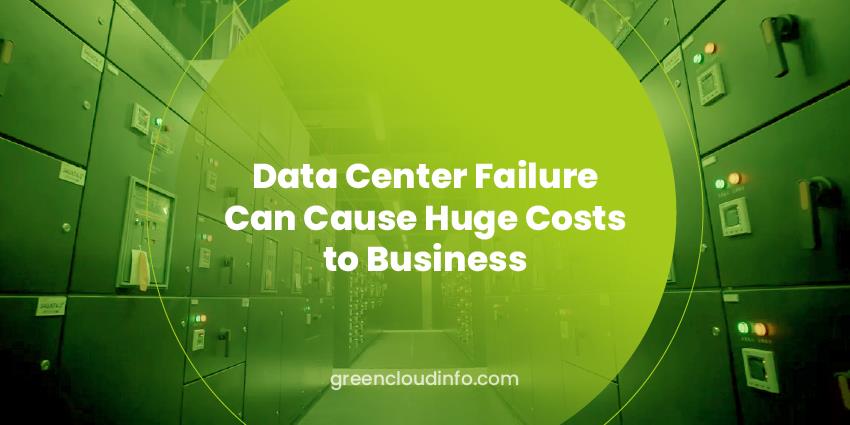A data center failure could result in considerable costs to businesses. A recent outage of Amazon’s cloud services caused some sites to become unavailable, including Quora, Reddit, and FourSquare. This outage cost Amazon millions of dollars in revenue. In addition, there was a snowball effect when the website for Netflix went down. The company reported a loss of $100 million in revenue due to downtime.
An outage of this kind is called a “cloud burst.” It occurs when too much traffic hits the servers at one time. Cloud burst is particularly problematic because they can happen at any time and with little or no warning. Companies must invest heavily in their data centers to ensure cloud bursts do not affect their customers. They must ensure redundant systems are in place so failures can be mitigated and controlled.
What Causes Data Center Failure?
Data centers are the heart of every business, from email to finances to backups and records running smoothly. Unfortunately, these operations can be costly and complex to maintain. A data center failure can cost a business millions in lost productivity. While your company’s IT department may have safeguards to prevent this, many things can go wrong once data leaves your office’s walls of protection. Here are some problems that can cause your data center to fail and how you can fix them.
Poor Management
An overworked IT staff or one without enough experience to handle the pressure of multiple projects will likely make mistakes in their work. If the people managing your data center aren’t adequately trained, they might not recognize potential problems with electrical outlets or air conditioning systems when they arise.
If you’re looking for an experienced team to manage your data center, look for people with at least five years of experience in this area and ask for references from previous clients.
Missing Backup Power
A backup generator is one of the most essential features of a data center because it keeps things running even when there’s a power outage on site. When power outages hit your data center, you need a backup generator for protection against blackouts, brownouts, and surges.
A reliable backup generator will keep all of your equipment functioning reliably so that you can continue serving your customer’s data center needs.
Switch Gear Failed to Operate
Switchgear is one of the essential parts of a data center. It allows data center professionals to effectively manage the flow of electricity and information between servers, making it a crucial element in ensuring the safety and security of all equipment. If a switch gear fails, the entire data center could experience power outages that can result in the loss of valuable data.
The leading cause of failure in the switchgear is when an overload or short circuit causes a power surge or blackout. This failure can be compounded by problems with the electrical wiring system that connects the switches or damaged insulation.
Damaged insulation also leads to overheating, which can damage internal components such as transistors and capacitors. Generally speaking, failure due to overheating is caused by an overload or short circuit. However, other problems may also contribute to overheating the switchgear, such as mechanical issues with fan systems.
When you choose your switch gear vendor, you must ensure that they have high-quality products that are efficient at cutting down on energy consumption while also providing redundancy.
Inadequate Security
A data center without adequate security is a data center at risk. Even if your systems are up to date and functioning perfectly, you’re letting your business down if you aren’t protecting sensitive information from the inevitable intrusion attempts. Don’t let lax security be the weak link in your organization’s defenses.
The employee may have been entirely unaware that such a thing was possible, and if they didn’t know what they were supposed to do in such a situation, they might not have even reported it. Technicians should also be aware of common paths for the attack so they can actively look for them. If someone has physical access to your network equipment, technicians must know where they should be watching out for attacks.
A Disaster Recovery Center to Prevent Downtime
A disaster recovery center is a designated space where employees can take their malfunctioning equipment and have IT professionals help them diagnose and fix the problem instead of taking time away from the office to bring their laptops back home for repairs.
When downtime occurs, most people have the plan to ensure that the downtime doesn’t last long. At first, this plan may be effective, but when the second or third outage occurs, you may begin to see the cracks in your system. When a business can’t operate in the manner it’s expected to, customers are lost, and revenue is at risk. This is why it’s essential to have a disaster recovery center (DRC) where operations can move if an outage occurs.
The DRC should be a separate location from the office with all the tools and equipment necessary to operate without missing a beat. If an outage occurred, you’d want to ensure minimal issues were switching over to keep your customers happy.
Read also: Indonesia Natural Gas Reducing 50% of Carbon Emissions
Conclusion
Many businesses are now establishing data centers, or server farms, to house the servers and storage that are becoming an essential part of their network infrastructure. These server farms can be costly to build and maintain, as they must provide a constant temperature and be protected from environmental factors such as rain, snow, wind, and dust.
However, despite this cost, businesses are still looking for ways to cut costs wherever possible. One way is by using the least amount of power possible on servers. This power saving helps to reduce monthly energy costs; however, it can lead to disaster when the power goes out.
When a company’s servers are down for 48 hours, the average revenue loss is 8 million dollars per day. This number can be even higher depending on the industry the company falls under and the projects they’re working on at any given time.
As electricity prices rise, switching to backup as a service is the best solution to avoid downtime. As clouds gain popularity, it’s only a matter of time before they become accepted as a mainstream technology. If you still need to start using backup as a service, or BaaS, you’re missing out on the opportunity to save some money.
Read next: Why Using Indonesia Data Center is Good for EU Companies?

